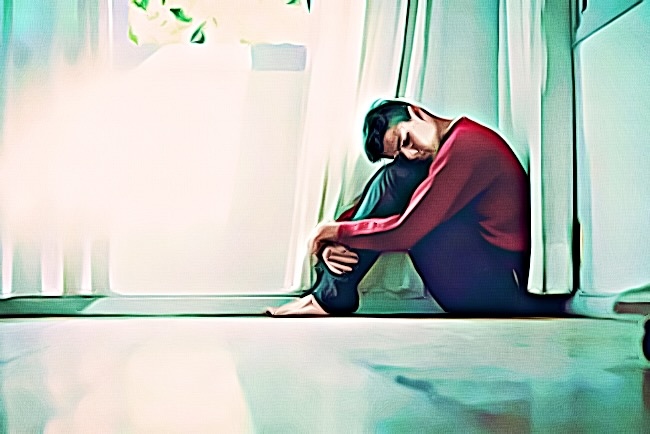If you or a loved one suffers from opioid addiction, this can lead to harmful consequences. What makes it addictive? The drug triggers the release of endorphins that create a powerful sense of well-being. On the other hand, when the effects of the drug wear off, you would likely look for those feelings back as soon as possible.
Today, one of the most popular drugs prescribed to help individuals cope with opioid addiction is suboxone. This is an oral prescription drug through a sublingual tablet or film. It has two active drugs: buprenorphine and naloxone. Buprenorphine helps with craving and withdrawal symptoms as it can block opiate brain receptors, while naloxone blocks the effects of the opiate drug.
Moreover, buprenorphine helps decrease cravings without having to worry about the full effects of an opiate. By contract, naloxone works in the background as a deterrent. However, the naloxone only takes effect when it’s injected into the system. With that, it can induce withdrawal symptoms, such as headache, vomiting, and trembling, among others.
Is It Effective?
How is suboxone effective? A study showed that opiate-dependent youth who used the drug for 12 weeks were likely to abstain compared to their counterparts who only went through the treatment in just two weeks.
Additionally, the drug can be prescribed by your doctor, unlike other opioid replacement medications that only require a specialized treatment center’s prescription.
A lot of people use the drug at the start of treatment, and others use it in continuing treatment and recovery. It’s essential to speak with your doctor or addiction counselor to help you come up with the right treatment plan.
A comprehensive treatment program is essential, including counseling and therapy that can target the underlying reason for opioid use. With that, it can help you find new ways to cope with stress and pain.
How Does It Help with Addiction Treatment?
Suboxone offers a long-term solution to managing opioid addiction, and it can be used in various treatment stages. When Suboxone is used in a comprehensive recovery plan, the medicine will help eliminate opioid cravings.
Keep in mind: Suboxone is a depressant, which means that it will slow you down. Therefore, you may experience pain relief, relaxation, calmness, fewer worries, and reduced stress levels.
What Are the Uses of Opioids?
Suboxone may be used to help individuals who have become dependent on short-acting opioids, like heroin and prescription painkillers. It’s crucial to keep in mind that the drug is not recommended for long-acting opioids; for this, a lot of people use buprenorphine-only medication.
The first phase of the drug treatment is in the withdrawal phase, as this is when symptoms are most uncomfortable. Also, it is at this point when it can get dangerous. Using Suboxone can help alleviate and eliminate the withdrawal symptoms; but of course, the whole treatment process must be closely supervised by a doctor.
From the withdrawal phase, you will move to the maintenance phase; and eventually, the treatment will be completed. However, once the treatment is completed, that doesn’t mean you’re done. Your doctor will likely reduce your doses until you no longer need medication.
When the treatment process is done right, you will have no cravings, no withdrawal, and you will feel normal.
What Are Its Side Effects?
Suboxone also has side effects, and it can lead to dependence. These side effects are more likely when you stop treatment immediately. Some of the symptoms of the drug are flu-like symptoms, vomiting, sweating, stomach pain, headache, and low energy.

Other side effects include joint and muscle pain, irritability, insomnia, feeling jittery, and diarrhea.
What Are the Withdrawal Symptoms from Suboxone?
Despite the buprenorphine in the drug that binds opioid receptors in the body and acts as a partial agonist, when you stop using the drug after you become dependent on opioids, you’ll likely feel a chemical imbalance that will affect the entire body.
The withdrawal symptoms of Suboxone are similar to flu, which causes body aches, high temperatures, and nausea. Moreover, other symptoms may include depression, anxiety, diarrhea, heart rate changes, dehydration, sleep disturbances, runny nose, to name a few.
What Is the Suboxone Withdrawal Timeline?
A lot of personal factors may affect the Suboxone withdrawal timeline. Tapering off the drug means you’ll have longer periods of withdrawal, and you’ll only experience milder symptoms. However, quitting cold turkey means you’ll experience more intense symptoms.
Here’s a withdrawal timeline to give you an idea of how it works:
First 24 Hours
After 24 hours without the medication, the first withdrawal symptoms will start to set in. Usually, this will include:
- Fatigue
- Anxiety
- General discomfort
You may also feel like you’re coming down with the flu.
Three Days
Once the withdrawal symptoms begin, unfortunately, things will get worse until they reach their peak. The peak symptoms are when the withdrawal is at its worst that may include body aches, nausea, vomiting, and diarrhea.
Seven Days
At this point, you will likely start to feel better. Most of your symptoms will be gone by the end of the first week. However, psychological symptoms may still linger.
Another thing to keep in mind is that the withdrawal symptoms of Suboxone will take longer to appear. Usually, the symptoms will begin 2-4 days once the patient stops taking medications.
Additionally, how long the withdrawal symptoms will last will depend on several factors, such as:
- How long the individual is taking Suboxone
- The Suboxone dose
- The tolerance for opioids
Most of the withdrawal symptoms that are experienced physically subside after a month. The most painful and uncomfortable symptoms recede after the first 72 hours. To avoid this, tapering off the drug gradually can help eliminate harsh withdrawal symptoms.
When it comes to Suboxone, it may be effective in addiction treatment for opioids, but it can also lead to some people being highly dependent on the drug itself. In turn, this will cause adverse effects that can lead to withdrawal symptoms like what an individual would experience when taking opioids and other drugs.
Consult with an Expert
If you are wondering whether Suboxone is a good choice for you, it’s best to speak with an expert—a doctor or your counselor—to ensure you get the right treatment.
Suboxone is effective, but it requires you to be mindful of how you’re taking it. It’s important you always follow your doctor’s orders. That way, you can guarantee that you will get the full benefits of Suboxone.
So, what are you waiting for? Ask your doctor or your counselor about the possibility of taking Suboxone. When done right, you will never have to worry about opioids withdrawal.
Conclusion
Knowing this information about Suboxone will help you determine if it’s something you want to take or not. With that, consult with your doctor and ask him or her if this is the right drug for you or your loved one. If you or someone else is experiencing Suboxone addiction, a treatment facility will be able to help you overcome this hurdle.
Source:




